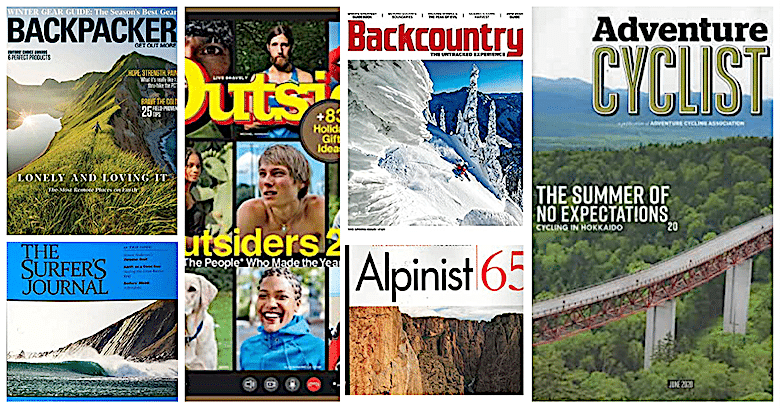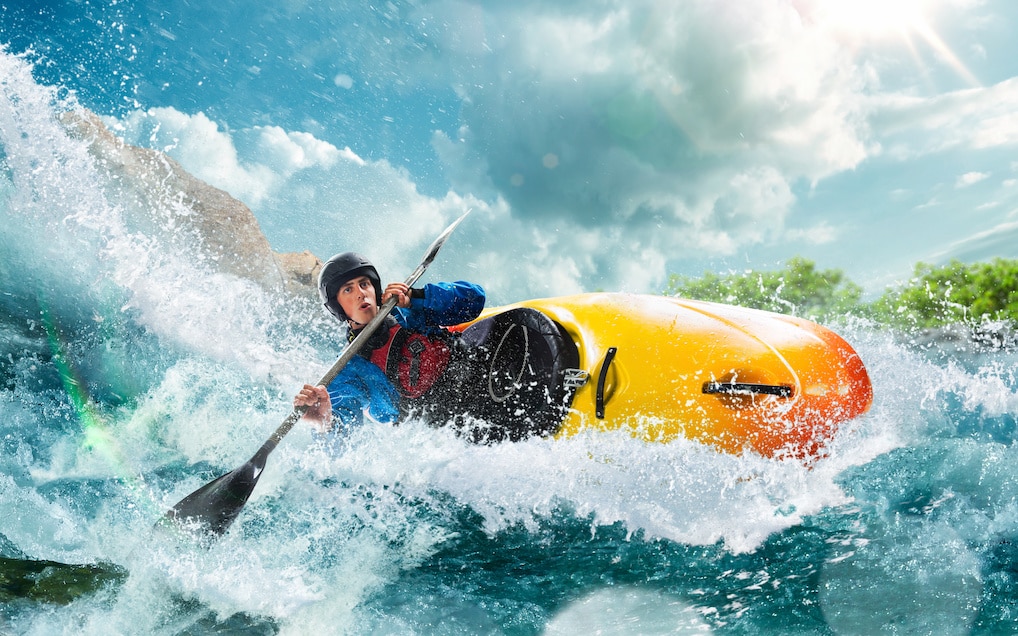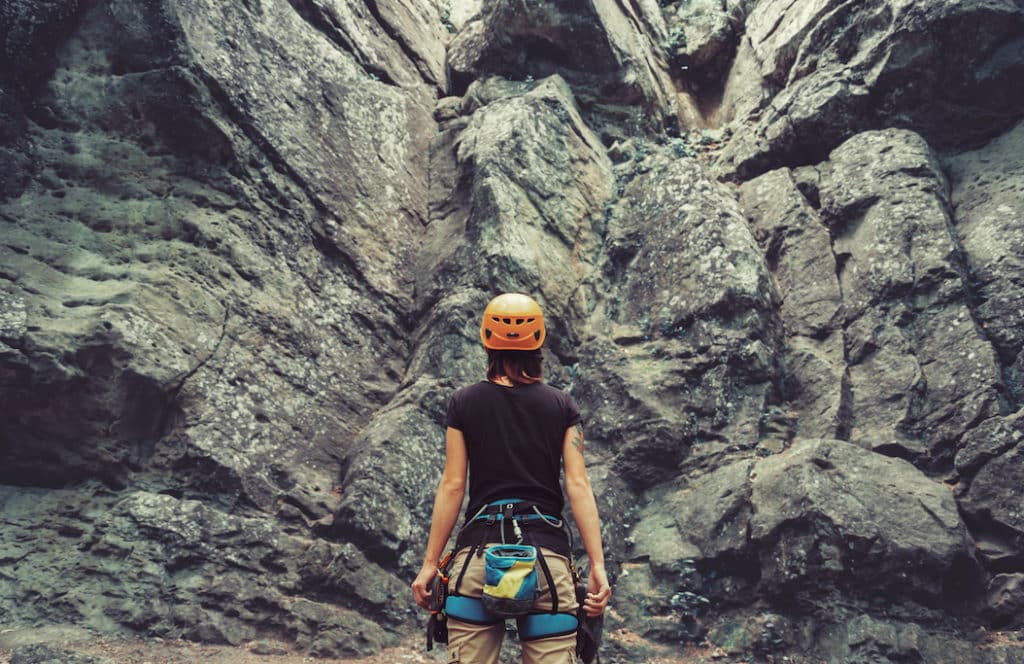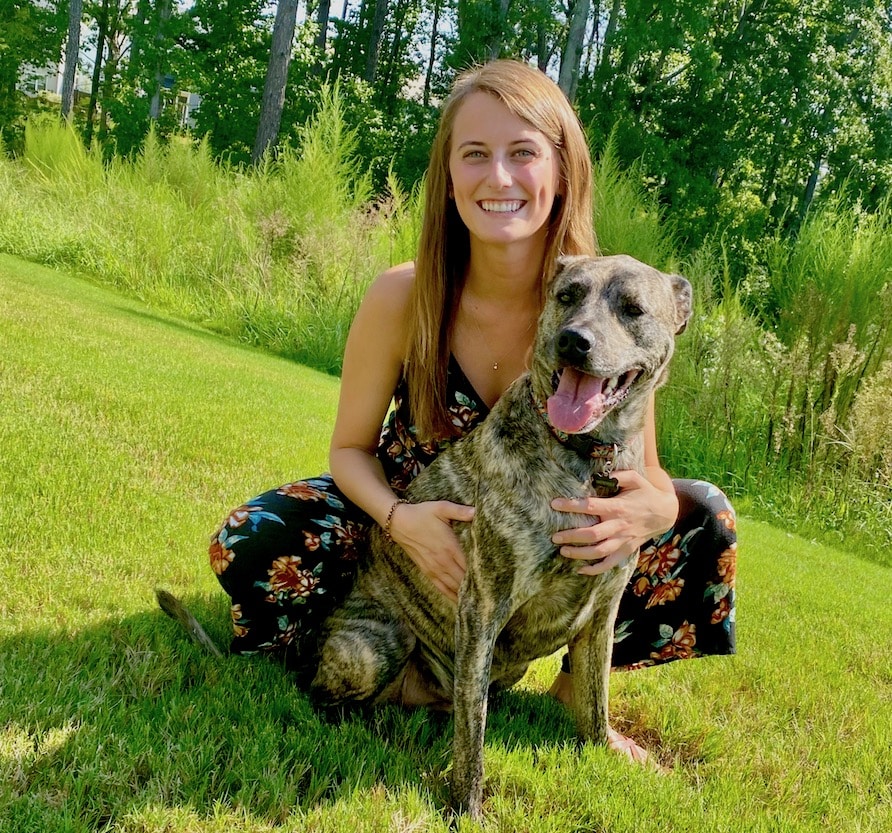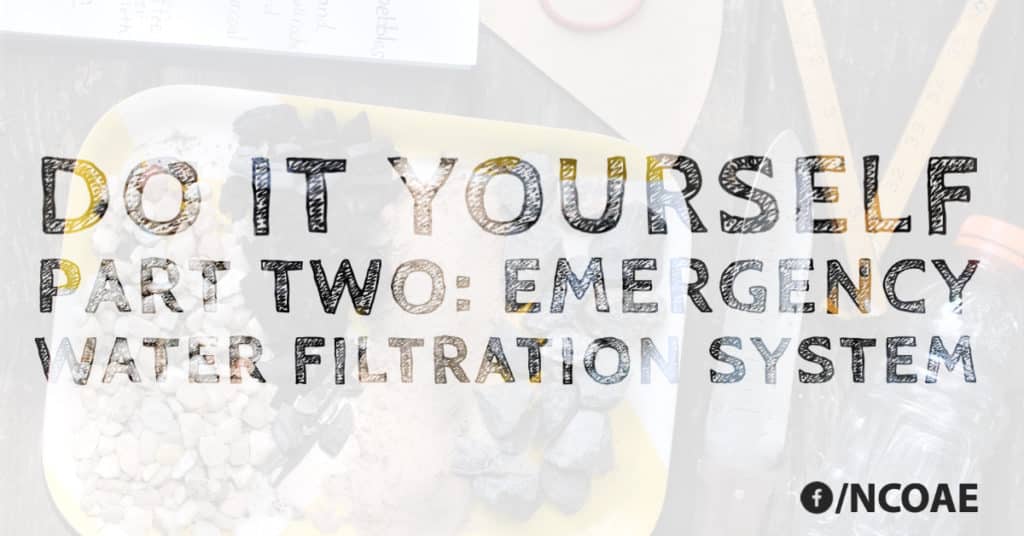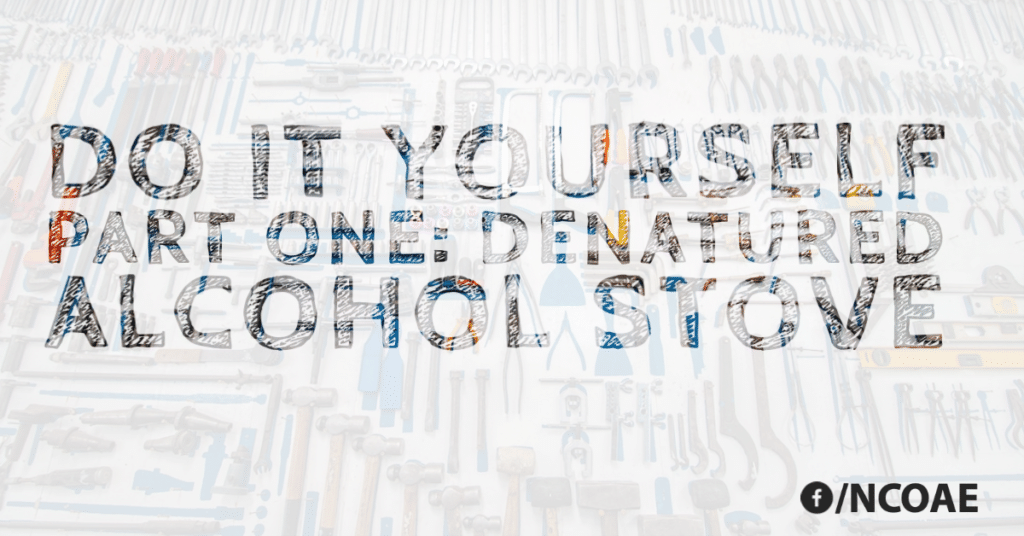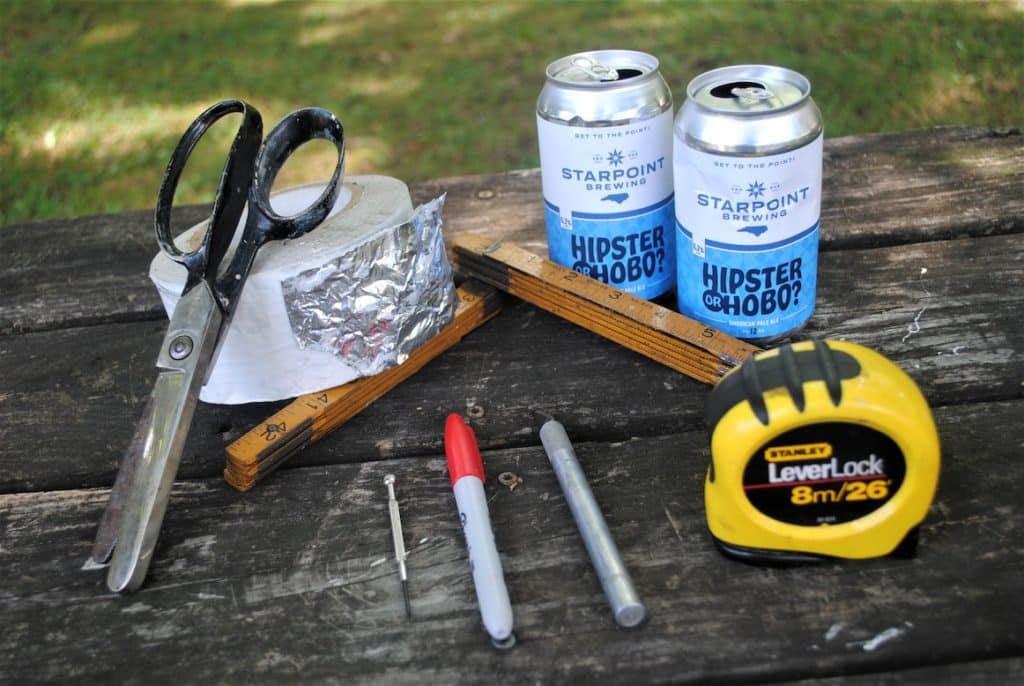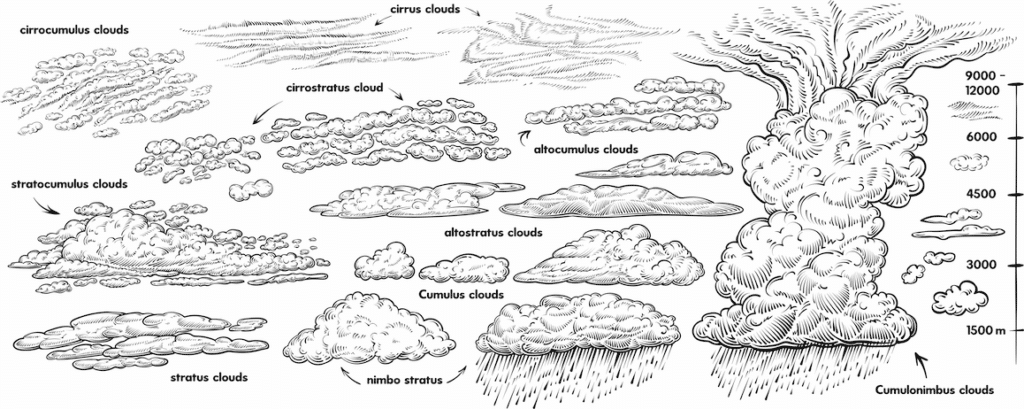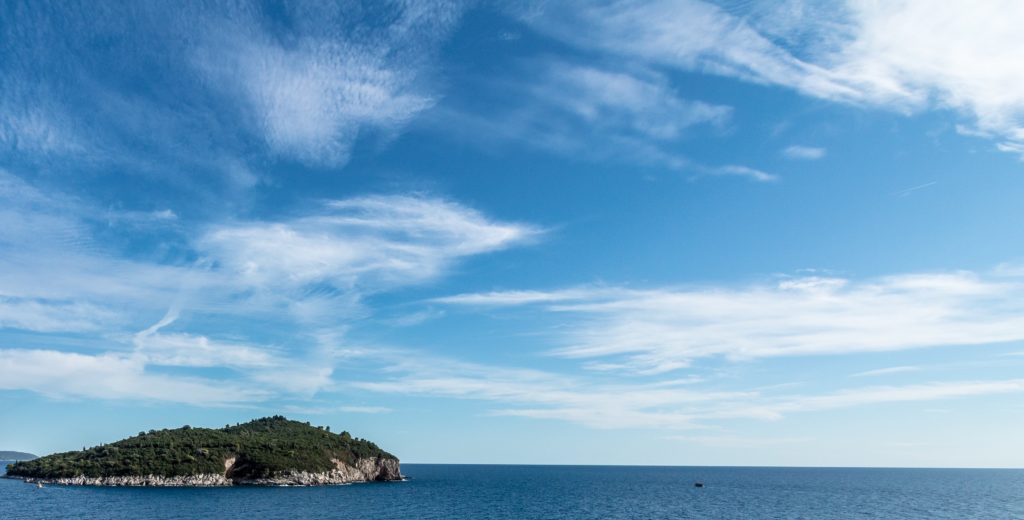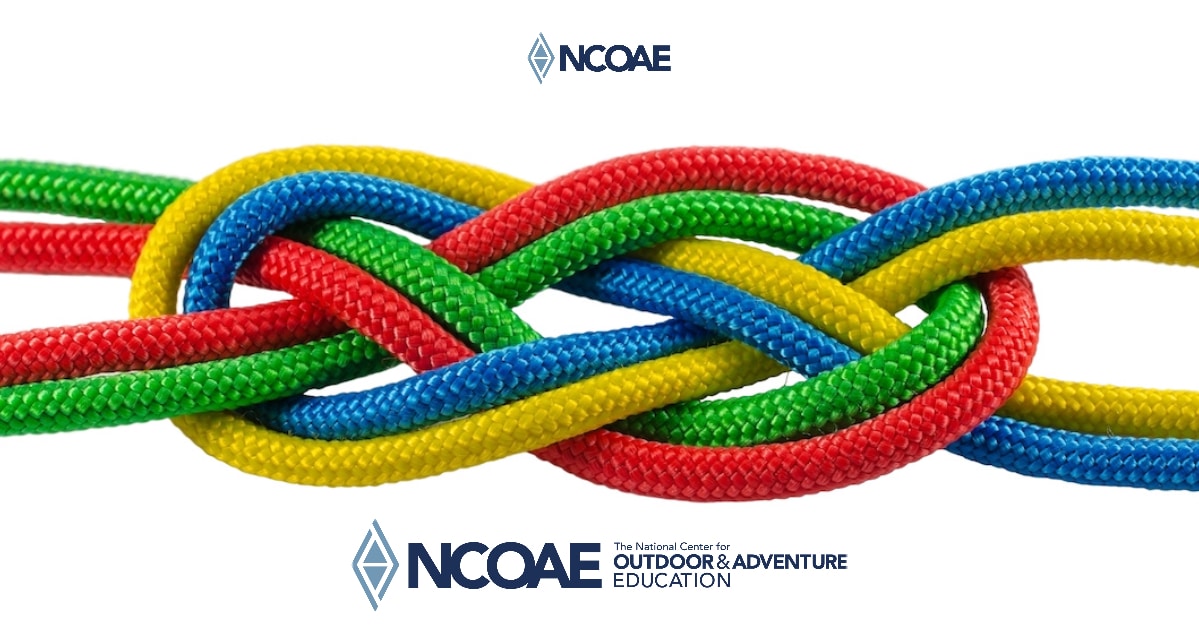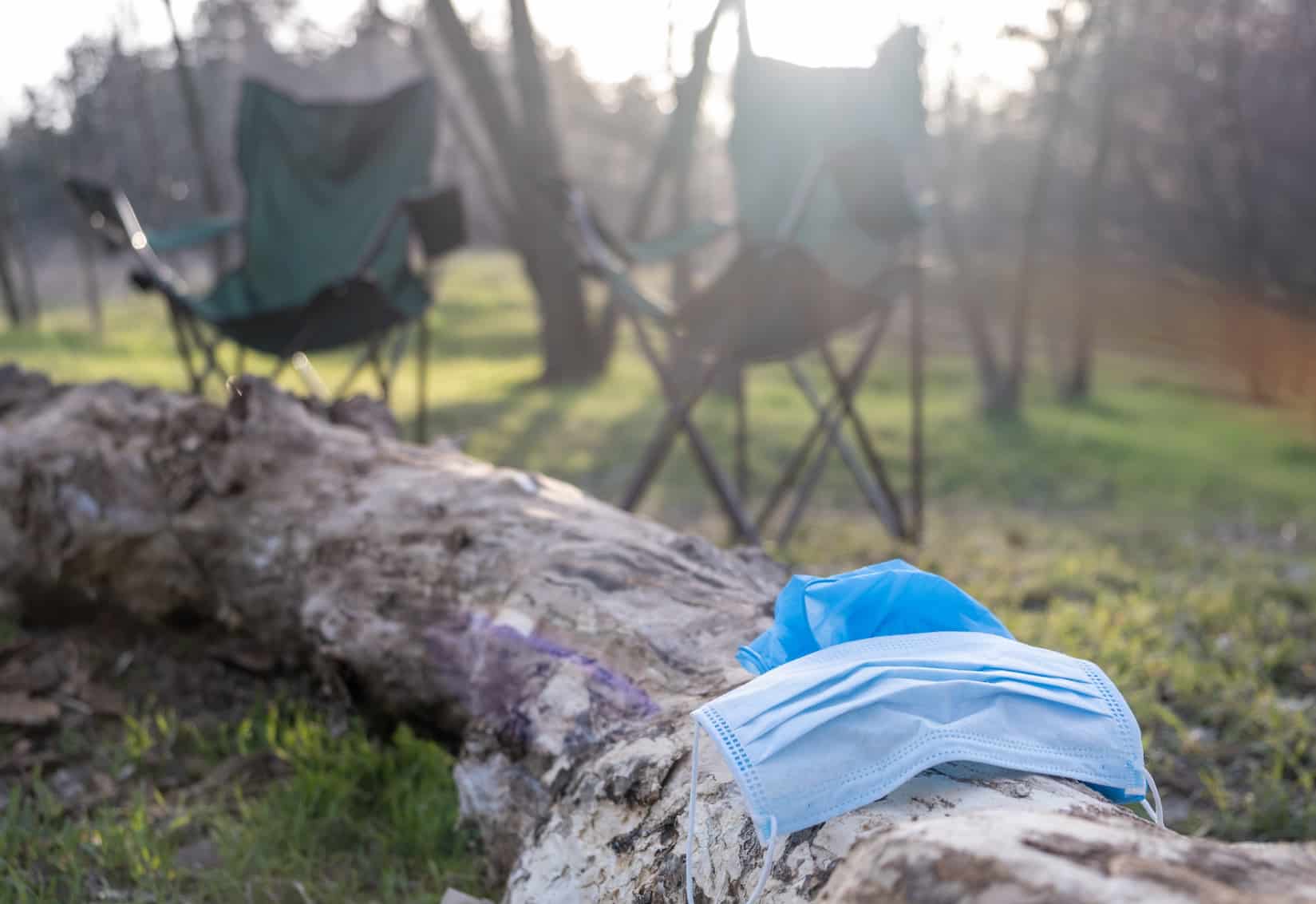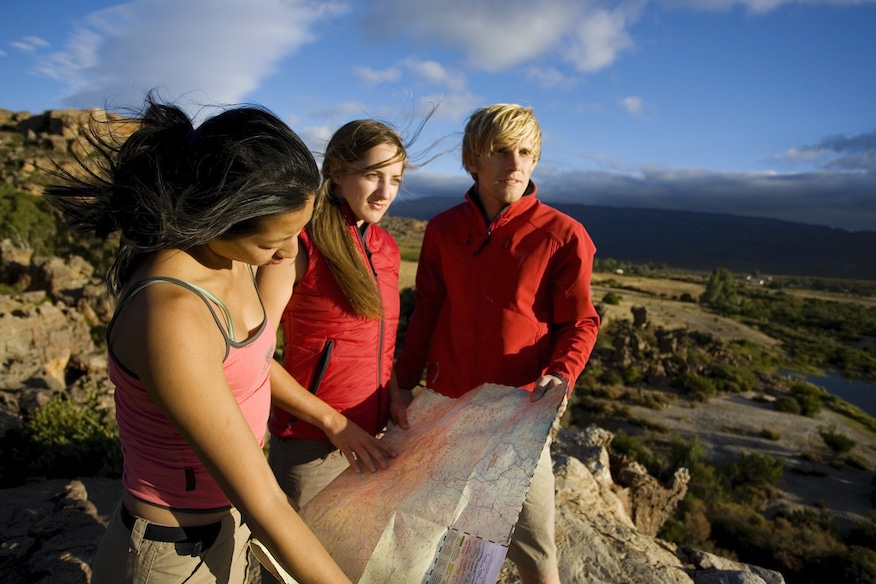NCOAE Blog
21-Day Intensive EMT-Basic Training Now Available in North Carolina
EMT TrainingStarting and completing EMT-Basic training in North Carolina doesn’t have to be a long, drawn-out exercise. It’s now possible — in just 21 days — to obtain the proper training and knowledge to take and then pass the National Registry and the North Carolina state EMT exam.
Editor’s Note: This course was previously a 19-day training but has since transitioned into a 21-day ‘intensive’ EMT certification course with a unique hybrid component as of 2021. Keep reading, and then visit the link at the end of this post for the latest info.
The following EMT Training video, which explains the ‘Intensive’ EMT-Basic Training program offered here at NCOAE, explains how we do it and why it’s so effective at helping people obtain their EMT credentials:
Classes meet virtually for 11 consecutive days, which include 131 hours of didactic, classroom training. Then, the class meets in person for 10 days, for an additional 61 hours of hands-on training, as well as 48 hours of clinical and (more…)
Outdoor Activities Getting Stale? Re-ignite Your Inner Beginner
NCOAE RecommendsThey say you never forget your first kiss. And while that’s very sweet and sometimes even true, the point I’m going to attempt to make is this:
If you’re an avid surfer, rock climber, or backcountry enthusiast, there are times when you look back on your first epic outdoor adventure. Sometimes it’s with a grin, and sometimes it’s with a grimace.
What we’re going to do in the next couple of posts in this new series here on the NCOAE blog is to ask you to consider rebooting your minds and think back to your initial foray into your favorite human-powered outdoor adventures.
Maybe you remember paddling into your first wave and just lying on the board until the person next to you leans over and says, “Hey, jump to your feet without thinking about it. It’s easy.” And so, you do — and you’re amazed how effortlessly it was. And it’s been 10 seconds and you’re still standing up, riding the foam, wondering where that sense of balance came from.
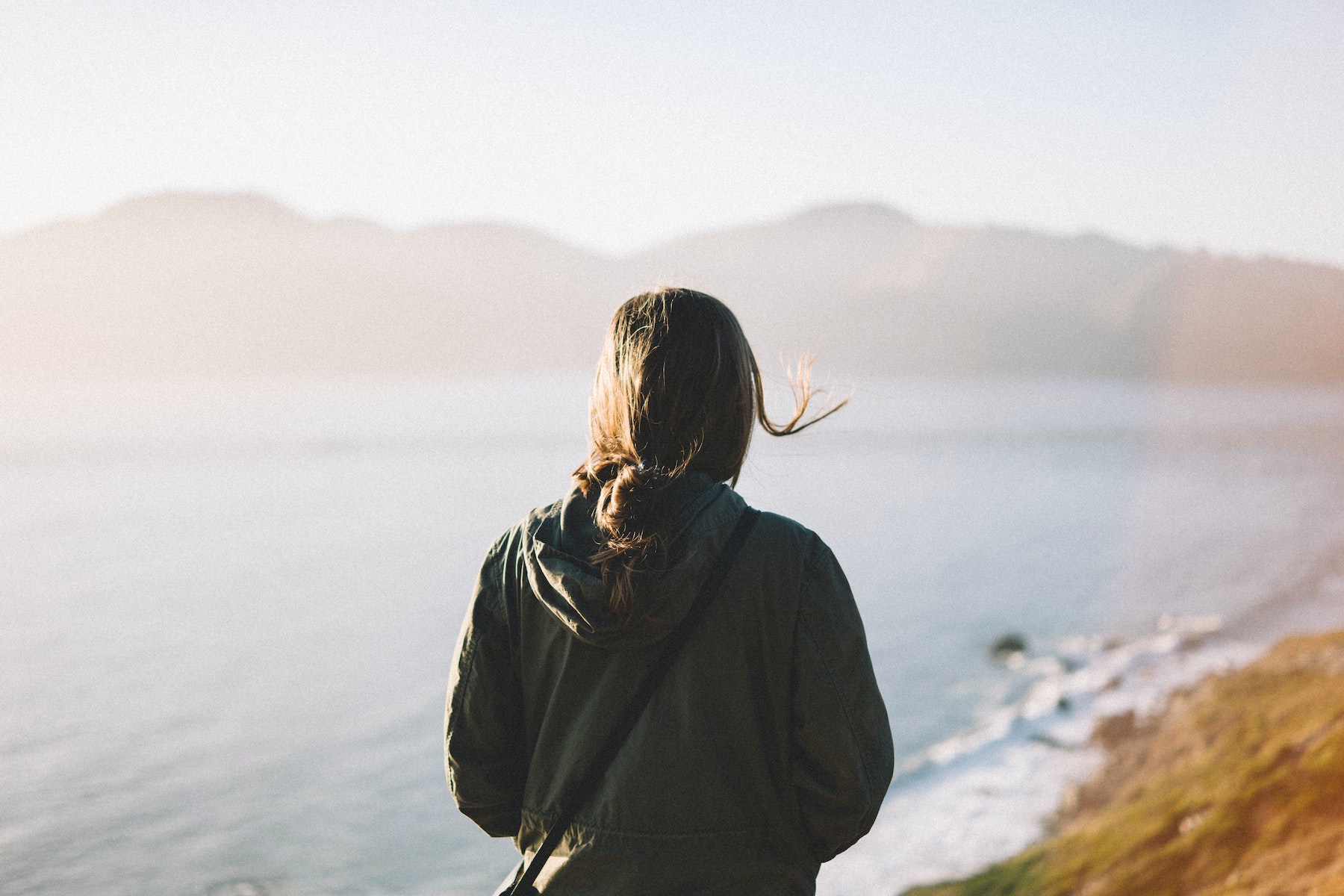
Same for the time you put on your climbing gear and successfully made your way up a challenging route. Or paddled your kayak straight toward a stretch of angry rapids.
Is it the adrenalin rush that got you hooked on your particular activity in the first place? Was it the ever-pleasant dopamine blast? More important, do you still get that feeling of excitement every time you participate in that activity or has it become routine?
If your answer is in the affirmative, head out and continue to do your thing. However, if the thrill is gone, or greatly reduced, keep reading.
(more…)Inspiration Through a Journey of Exploration — Part Three: Outdoor Magazines
WildlifeAs you’re probably already aware, outdoor magazines such as Bike, Surfer, Powder and Snowboarder have all shuttered their windows and shut down their presses. So now what? Where do you turn for some real human-powered and adventure-based outdoor and journalism? And by journalism, we’re not talking about tweets, posts, and pieces written in and curated by whatever advertising banner flies across a website or social media platform.
Print journalism — especially outdoor magazines — is supposed to show an investment in credibility. Its printed editions say, we care and we are serious about what we do. And how do you gain access to a quality outdoor journal? You pay for it, that’s how.
We have no problem spending money for independent music, artisan foods and craft beer, as well as the artists we really want to see. To obtain those experiences, we go buy the vinyl, we shop the local markets, we attend the art shows, and we actively support these ventures.
But today, the majority of our best journalists, photographers, editors, and artists are independent operators, some contributing to outdoor journals such as Adventure Cyclist Magazine, BikePacker Magazine (now part of Bikepacking.com), The Surfers Journal, and Adventure Journal. Unfortunately, these magazines could soon disappear if we don’t continue to support their work.
“Ah,” you say, “But I can view any of these journals on their websites and see what they are doing.” Yes and no.
Yes, you can see the work of these journals — and their journalists — online, and indeed, the quality of the photography is beautiful, and the writing is inspiring. With just a click of a mouse, you can get a fair representation of what a slick, colorful, hold-in-your-hand magazine can give you. But not quite.
Print magazines and journals are the best! They physically arrive on your doorstep and you devour them so fast you can’t wait for the next to arrive. And the next issue won’t arrive for another three months! So, you keep your back issues. Another plus, no need to plug in, boot up, log on, and go into a search box to find words to read and beautiful pictures to help you escape.
Three months between issues? Sometimes! Quality takes time.
We’re not saying online journalism is without merit. But, honestly, in a short time, online articles are shuffled off to Recent Posts archives, mistakes and typos are corrected and edited. But once a magazine or journal is printed and in your hands, it is (more…)
Inspiration Through a Journey of Exploration: Part Two – Federico Cabrera
InspirationFederico Cabrera is a dreamer. For years, he had dreams of becoming a National Geographic photographer. Taking photos in Africa was top of mind for 15 years as he toiled in foreign trade. But that nagging thought of grabbing up a camera and exploring the world finally prompted Federico to give up his successful career and follow the photo bug dream.
These days, Federico Cabrera is a Buenos Aires-based freelance photographer, traveling throughout South America on a bicycle and living in the countryside and, as we’d like to point out, making a difference in the world.
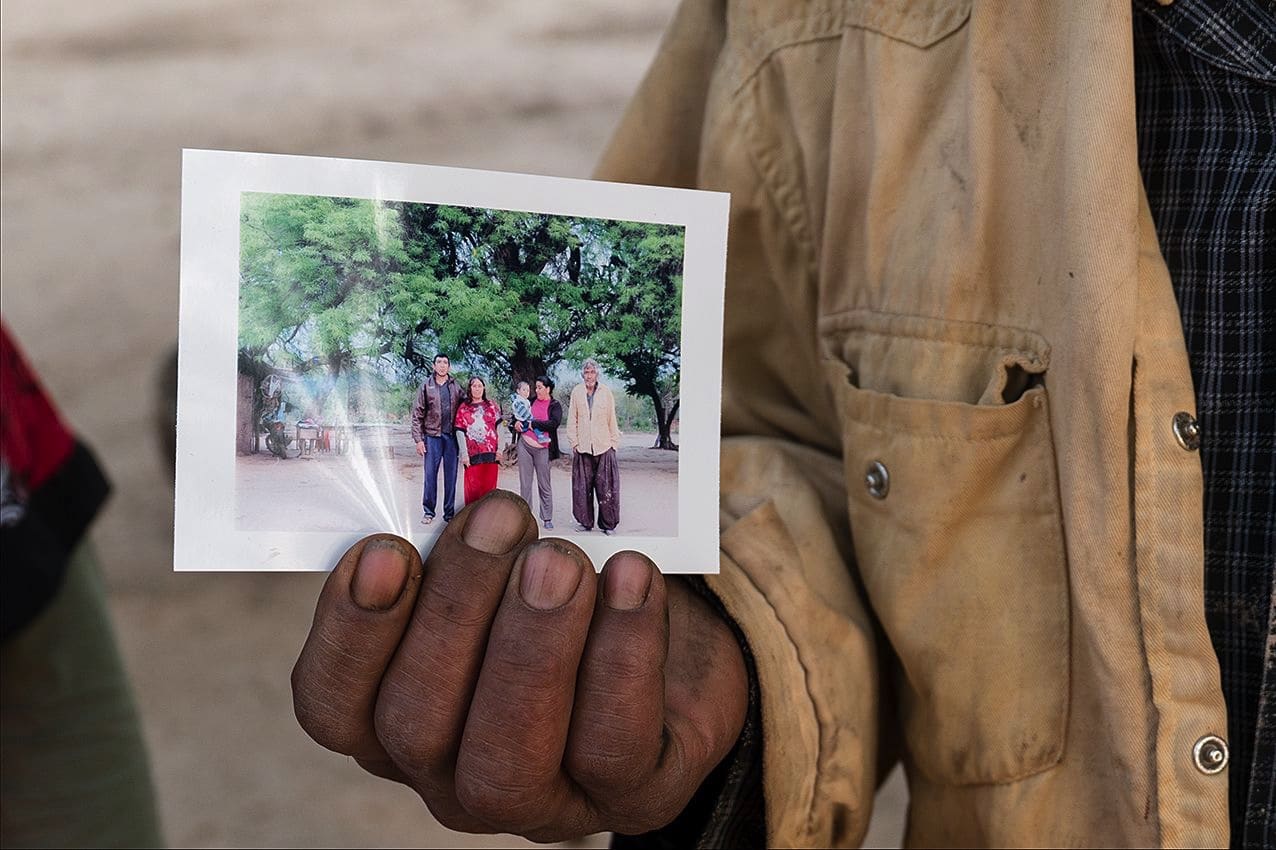
Walking away from his former career, Federico put new-found energy into a life behind the lens. And to do this, he said he began commuting country to country by bike, initially to reduce stress and eventually to return to a simple/healthier way of living. He now travels at a pace that enables him to actually see the countryside from the seat of a chain-driven bicycle rather than behind the wheel of a fast-moving, impersonal car.
Today, we feature the works of Federico in Part 2 of our Inspiration Through Exploration series. A photo is nothing more than light passing through a hole in a box. Whether exposed to paper treated with chemicals or digital receptors, the end product is the same — a photograph. And when you see a photograph that moves you, that is inevitably the result of the subject and the camera operator engaging in the movement of light together — a beautiful dance.
This week’s featured artist not only performs this dance with his subjects, but he produces beautiful portraits of them that he frames and then hands over to the subjects of his photography. His portraits are the residents of poor communities in South America, many living in homes with little or no access to electricity or clean water.
It was while visiting with these families that Federico discovered that in many of the homes, the residents didn’t even have a portrait of their family. That prompted him to carry a printer along with paper and ink to deliver personal portraits of his subjects.
On a more realistic level, Federico saw many families living with little or no electricity in their homes and worse yet, contamination in their water supplies. He decided he could make a small difference by handing out solar lamps and water filters to households he visited while on his expeditions. That, along with portraits of those families that were often the only photographs these South Americans had in their homes.
Federico figures he’s donated nearly 350 solar lamps and water filters, along with more than 500 printed portraits in the six years since he began these bikepacking adventures, which include expeditions through Argentina, Chile, Venezuela, Brazil, Peru, and Bolivia.
So when Federico packs up for a photo expedition, he brings along his essential photography equipment, as well as solar lights and water filters that he personally delivers to those who need them.
A photographer? Yes, but Federico is much more, not only capturing the light to make a family portrait, but a light that is filled with empathy, compassion and a heart.
We asked Federico what inspires him and how he arrives at his inspiration:
(more…)Inspiration Through a Journey of Exploration: Part One – Alex Hotchin
InspirationThis week we begin the first in a three-part series called “Inspiration Through Exploration” where we will see how gifted and novice travelers alike can document their adventures through artwork, photography, writings and other means.
Today’s inspiration comes from Australian Alex Hotchin and her beautiful — and very unique maps. Next week, we will explore the photography of Federico Cabrera in his “Their Only Portrait Project.” And in Part Three, we will see how primitive and print journals are emerging, with representation from both the Adventure Journal and Bikepacking Journal.
What we here at the National Center of Outdoor & Adventure Education (NCOAE) hope to accomplish in this series is to inspire outdoor enthusiasts to document their adventures in new and fascinating ways. Too often we just pick up our smartphone or camera to grab a quick shot of a passing bird, a mountain formation, or the cool gear of the hiker in front of us.
We are hoping to encourage you to move outside the boxes (devices, phones, computers) that are typical of modern-day sharing. For example, I carry a camera on my bicycle, usually strapped to my climbing harness or in my boats. Ninety-nine percent of the time I don’t touch it. So, why carry it at all? Because maybe one percent of the time, I see something that I want to help illustrate the story and memory of that specific moment in time, during that specific journey. I like to take pictures of the unexpected.
Most of the time, I also carry a roll of colored pencils and a notebook. Drawing takes more time, so it forces me to stop and think about how to best combine lines and colors to represent something meaningful to me and to connect my story with those who might see it later on.
Many times upon returning from a long outing or expedition for NCOAE, I show my family and friends my journal, drawings, and photos to accompany my stories. This gives people the opportunity to come up with questions, engage with the landscape and not just ask, “How was your trip? “What did you do?” Sharing on a personal level allows for a secondary depth of exploration, face to face (or six feet apart for now).
Meet Alex Hotchin
Alex is an illustrator who creates books and maps to tell her stories. Her illustrations are inspiring and the maps she creates are personal to herself and to her specific journeys.
When looking at Alex’s work, you get the sense you have actually joined the journey. Alex takes two-dimensional representations of maps and makes them jump off the page. Scale is not specific to cartography, with the scale offering viewers a look through the artist/adventurer’s eyes. What she saw out there — the beauty, the obstacles and cultural significance — is laid out before us in lines, shapes and colors.
Can you actually find your way using her maps? I suppose that depends on where you want to go. We asked Alex to provide us with a little detail about the work she does, and here’s what she had to say:
(more…)Paddling Terminology and Slang: Nobody Says ‘Up a River Without an Oar’
Outdoor LingoWelcome to our third — and final segment in our series about sports terminology and slang terms. In this post, we’ll be talking about whitewater paddling, and right off the bat, we’ve got a warning for the novice paddler.
Those who might be unfamiliar with whitewater kayaking or canoeing might think rowing and paddling are the same thing. But those folks would have another think coming. Because nothing raises the hackles of a whitewater guide or enthusiast than hearing a newbie describe canoe and kayak propulsion as “rowing.” Strike One!
The only thing worse would be referring to a paddle as an oar. Paddles are used for paddling. Oars are used for rowing. Strike Two!
We apologize for the harsh tone, but we are professional educators and guides here at The National Center for Outdoor & Adventure Education (NCOAE), and our primary purpose today is to support you in your efforts to make yourself a more confident person when you emerge from the river. That means that, during the course of a conversation, if you were to say you were rowing a river and got your playboat stuck in a ‘sticky hole,” you would need to take a “wet exit” from the conversation without the opportunity for a “brace” or a “combat roll.” Fact!
So, let’s pack our dry bags, pull on our skirts and PFD’s and hit the river.
We’ll start with the name of the vehicle in which we will be paddling. Your first thought might be to call it a kayak. Don’t. Yes, in every design aspect and shape it’s a kayak. But when you talk about your kayak, you will be saying “boat.” No, really. We insist. And we understand you might be confused but trust the process.
Here are some terms you’ll need to know about the boat (kayak) and it is various and sundry accessories:
(more…)On Belay — Climbing Terminology and Slang
Outdoor LingoDid you hear the one about Rock and Ice magazine merging with Climbing magazine? It’s not a joke. That news was announced just today (Oct. 9, 2020), and it conveniently coincides with the next post in our series on outdoor industry lingo. With the assistance of The National Center for Outdoor & Adventure Education’s (NCOAE) outdoor lexicon support team (that’s me), most of you were able to make it through the first post in our outdoor industry lingo series — Surfing. And now, just when you thought it was safe to go back to regular English, you get to learn an entirely new language.
For today’s writeup, we’ve got you “on belay” with all the “beta” to get you through the “crux” of the lingo learning curve so you can “on site” any climbing conversation.
Holy crevasse! Why are all those terms in quotation marks? And what do they mean?
Pay attention, Grasshopper. While I can’t (won’t) give you the entire exhaustive list of climbing terms, I am going to go deeper into the nifty nomenclature of climbing. And the first thing you’re going to need to access in order to summit this speech peak, is the climber’s “bible.”
This 60-year-old book is called “Mountaineering: Freedom of the Hills,” and it’s available now in its 9th edition. So, if you want to climb or become a mountaineer, or if you just want to speak intelligently about the topic at climbers gathers or Zooms, get the book. Why? Look around you. Even the most ardent climbers, guides, and outdoor education professionals reference Freedom of the Hills.
So, let’s “tie in” and get you on the “sharp end” by the end of this post. We need to get you talking knowledgably about climbing.
I’m thinking we should start things off with how climbs are rated — the difficulty level. You might hear someone talk about climbing a 5.9 with a 5.12 pitch at the crux. And you don’t have a clue as to what that means. Bottom line? We’re referring to the “Yosemite Decimal System” (YDS).
The Yosemite system is a common and dynamic language. And like ardent surfers talking about big waves, nobody wants to claim they are climbing harder routes than they really are. It’s just too easy to prove that you’re exaggerating. So, is this YDS accurate? If you climb — or attempt to climb — you may come up with the answer yourself.
(more…)Surfing Terminology and Slang: You Can’t Play BINGO Without the Lingo
Outdoor LingoSeems most every human-powered outdoor recreation activity has a language of its own. And the more popular that activity becomes, the more expansive the list of slang words and new terminology become. It’s a way of communicating efficiently with your fellow enthusiasts, and let’s face it, speaking the language makes your part of the group.
In this next series of posts here on the NCOAE Blog, we’re going to explore the unique spoken word of our beloved adventure-based sports. We’ll start off with surfing, the “Sport of Kings,” this week, then move on to climbing and paddling in future posts.
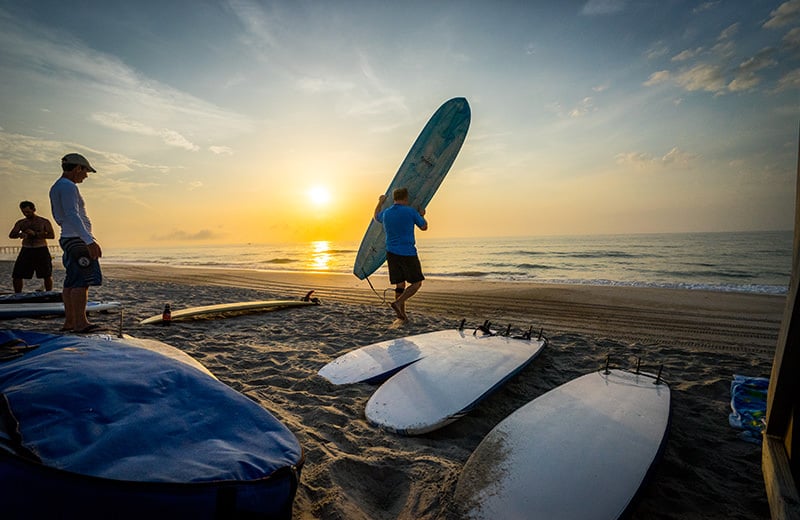
And now, without further ado, let’s go ahead and push through the shorebreak, paddle out to the lineup and grab us up some gnarly waves.
Sorry. One more aside before we begin. Let’s go ahead and elaborate on that “Sport of Kings” comment above:
Back when missionaries arrived on the Hawaiian Islands, they quickly banished the sport of surfing, calling it hedonistic and probably too much fun. They also gifted the Hawaiian population with a variety of diseases, but that’s another story. However, when King Kalakaua was installed on the throne in 1872, one of his first acts was to reinstate this ocean-specific human-powered activity that was so loved by his royal predecessors. And once again, surfing became the “sport of kings” and commoners alike.
Since then, surfing has become among the most romanticized sports in the world. Films like The Endless Summer, Point Break, Elvis Presley’s Blue Hawaii and even the Gidget television series drew thousands of young people into the ocean and onto waves across the coastlines of America — and around the world. And most recently, as you’ll see in the video below, Maya Gabeira — a Brazilian surfer who makes it her mission to tackle big, big waves — recently broke the Guinness World Record for the Largest Wave conquered by of woman!
Again, sorry. One final diversion and then we’ll get to those surfing terms:
Lee Clow, the advertising icon who worked directly with Steve Jobs on classic Apple television ads and futuristic consumer trends, brought the culture of local surf shops into Apple’s megastores around the world. Instant success. This California ad genius — himself a veteran wave rider — knew all about the bond between a surfer and a surf shop.
For instance, he knew that surfers find any reason at all to visit a surf shop. Even when they’re broke. It’s where they hang out, hear about the trends in surfboard design, get the insider track on new surf spots or what’s breaking. You feel part of a family, and you speak the same lingo. Yep, Apple took Lee Clow’s sales pitch to heart and the rest is history.
No more asides. No more fun facts. Let’s talk surfing terminology:
(more…)Meet the Staff: Kassie Kehrer, NCOAE Executive Assistant
Staff ProfilesKassie Kehrer is our new executive assistant, tasked with ensuring the efficiency of our Wilmington, N.C., office here at The National Center for Outdoor & Adventure Education (NCOAE). In addition, Kassie is responsible for enrolling students in our many medical trainings, outdoor education courses, and backcountry trips. She’s also the go-to person when it comes to customer service and support, collecting enrollment paperwork, and making sure things are running smoothly for students and staff members alike.
Born in Schenectady, N.Y., and raised in Washington State, Kassie attended Western Washington University in Bellingham, Wash., where she majored in recreation with a concentration in Recreational Therapy & Child Life Services.
Prior to joining us at NCOAE, Kassie spent the past six years working for the YMCA of the Triangle in Raleigh, N.C., with four of those years in the position of director of Camp Rising Sun. She said the job gave her the opportunity to coach and hire staff and build an inclusive environment for kids of all abilities.
Prior to that, Kassie worked in a variety of roles, ranging from counselor to kayak instructor, at places like Camp Wingate Kirkland in Yarmouthport, Mass.; Brookline Parks and Recreation in Brookline, Mass.; Camp Indianola in Indianola, Wash.; and Camp Greenville in Cleveland, S.C.
In college, Kassie was a recreational therapist and Child Life intern at Shriner’s Hospital for Children in Boston. She then went on to work as a program coordinator at the Henderson School for Inclusion in Dorchester, Mass., and served as a behavioral therapist at The May Institute in Boston.
We asked Kassie to tell us a little bit about herself, and here is what she had to say: (more…)
DIY Part 3: Brewing Coffee in the Backcountry Like a Barista
Backcountry PrepWhat’s the only item in your gear closet that could possibly be more important than food, water, and shelter? For most of us the answer to that question is coffee! That complex nectar of the gods that makes us sharp in the morning and warm at night. And as the old saying goes, “Everyone should believe in something. I believe I will have another cup of coffee!”
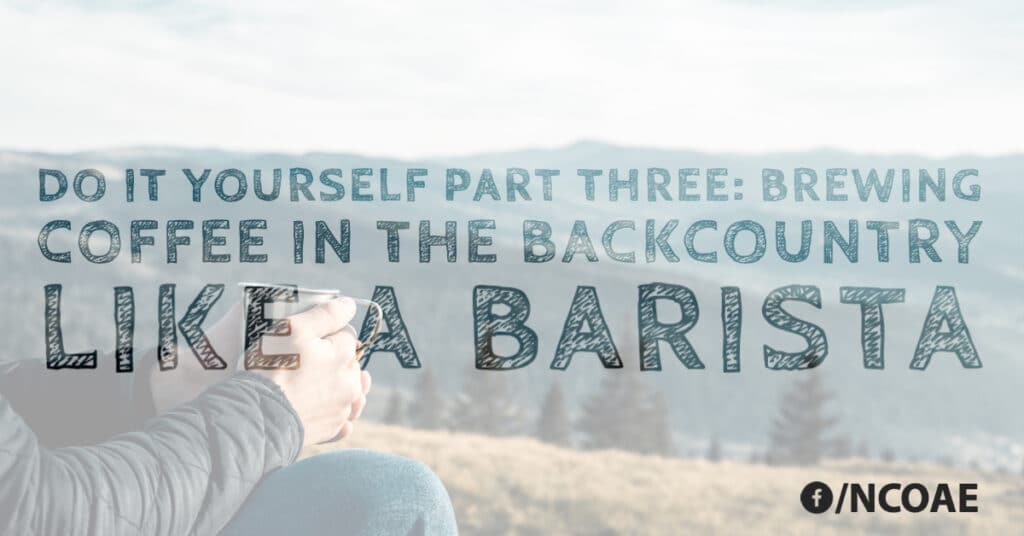
And, since brewing coffee is as much of a ritual as it is a necessity, you can imagine the amount of gear you’d need to stuff in your backpack in order to prepare the perfect cup of coffee in the wilderness. The question becomes, how do we get that great cup of coffee — using the best beans and blends we can find — without breaking the bank and our backs in the process?
In this, the third and final installment of Do-It-Yourself camping tips, we address the coffee snob within most of us, and share some interesting coffee-related quotes along the way.
Now make a face and say, “Instant coffee? Are you kidding me right now?”
COFFEE QUOTE NO. 1: “What goes best with a cup of coffee? Another cup.
Henry Rollins
So let’s get to it. We’ll teach you how to pack and prepare the best cup of coffee possible in the backcountry. And you’ll be able to perform this feat in five to seven minutes.
Heres’ what you’ll need:
(more…)DIY Part 2: Emergency Water Filtration System
Backcountry PrepWe’ve all seen those old Western movies where the hero is crawling on the desert floor with an empty canteen and a parched throat. None of us want to experience that torture. It’s bad enough watching the bad acting. Same goes for heading to the backcountry for a weeklong wilderness experience. Nobody wants to be caught short of fresh drinking water.
Here’s where the do-it-yourself approach to human-powered outdoor recreation really comes in handy. The stove we built in Part One of this three-part DYI series, can be seen as an inexpensive alternative to a store-bought stove, and as a tool to help us understand how camping stoves work. Because the more we are familiar with the inner workings of equipment, the more likely we’ll be able to solve challenging issues with that stove.
It’s a given. Your gear will fail you.
That being said, the water filter we’re building today falls more into the understanding of how filtration systems work. Again, if we comprehend how our equipment works, we can better take care of that gear and repair it when it reaches a point of failure. And, if you have spent a considerable amount of time traveling in wild places, you know that your gear is eventually going to fail.
First off, there are three tried and true methods of water purification — boil, filter (purify), and chemical treatment. (For more on this, read Stay Sharp in The Offseason By Following the Way of the Farmer, available here on the NCOAE Blog.)
The industry standard when traveling with groups on guided trips in the backcountry is the use of chemical treatment, typically Iodine. That’s because Iodine is inexpensive, easy to carry, and highly reliable. Many outdoors enthusiasts use a commercially available filter, life straw, or gravity feed system. Not surprising, many don’t know how they work or how to repair them in the backcountry. This lack of knowledge has cut short many a trip due to a water filtration failure.
Once, while traveling in Nepal with a group of students from NCOAE, I was almost forced into building a water filtration system like the one we describe below. One of the participants swore he was having a reaction to the chemical treatment. And, because the mental perception of one individual can affect the entire group, when water quality is in question, we need to overcome that obstacle. My thought was to create a filter system that would not only educate the students but keep everyone safe — whether that danger was perceived or not. Fortunately, it never came to that.
(more…)Do it Yourself Part One: Denatured Alcohol Stove
Backcountry PrepVisitors to our blog are going to react in one of two ways when they see an article with “Do it Yourself” in the headline. You’re either going to avert your eyes and try to find a less intimidating article. Or you’re going to greet this headline and subsequent instructions with enthusiasm and frenzied fervency.
Here’s hoping you’re among the second category of DYI folks who revel in the experience of creating things from scratch. You know, those Junior MacGyvers who’d rather spend a weekend creating a project than spend nine bucks for the same item at the store.
That’s why we’re dedicating the next three posts here on the NCOAE blog to help you find what we hope is the do-it-yourselfer deep in your soul. Here at The National Center for Outdoor Adventure and Education (NCOAE), we have always used the equation of Self + Community + Action = Impact. It’s the notion of making the changes necessary to feel better about yourself and see your role in a community of peers, practice, neighbors, or just society as a whole.
Through our outdoor education and wilderness medicine programs we have helped countless individuals and organizations — through interaction with nature and wild places — to move forward to a more conscious way of living life and perhaps influencing the world around them. Just look at the many companies that were born of DIY thinking. There’s Patagonia, Petzl, Outdoor Research, Swift Industries, Black Diamond, and pretty much everything related to the surf industry.
So, for this installment and the two that follow, we will be exploring the DIY experience of creating equipment destined for human-powered outdoor pursuits, either for fun or out of necessity. We find that DIY projects give you a taste of the experiential education process from the comfort of your own home or garage.
And Part One of this series is how to make a denatured alcohol stove.
Years ago, I made the beautiful mistake of buying “Beyond Backpacking” by Ray Jardine. The mistake? The book inspired me to begin purging my gear, make my own gear, and learn how to go light for less money. Gearing up for a huge trip inspired me to follow the “Ray Way.”
It was around that time that I built my first denatured alcohol stove. The process is straightforward and acquiring the materials can be a lot of fun. For instance, you’ll need to empty a couple of soda or beer cans before you even get started. Any beverage can will work, but some folks would prefer to drain a can of beer. Because building this stove is about the experience and the pursuit of learning. And, of course, the enjoyment.
(more…)Look Up! Cloud Identification and What the Clouds are Telling Us (Part 3)
Outdoor Educator TrainingAs we outlined in earlier parts of this series, our instructors are expected to possess a wealth of experiences, as well as areas of knowledge and skills that educate and keep course participants safe, engaged, and active in the backcountry.
An example of that is learning about cloud formations and their relationship to weather. Just like constellations(see: Look Up: A Guide to Viewing the Upper Half of Our Surroundings and bird identification (see: Look Up and Meet Your Feathered Friends), learning the individual names and characteristics of clouds can be a fascinating and worthwhile enterprise, not to mention informative and highly useful from a risk management perspective.
In this, the third and final installment in our “Look Up” series, we cover how to identify the clouds overhead and what those clouds are telling us. Because learning this skill is yet another way our AEE-accredited outdoor education program scaffolds leadership and learning in the backcountry.
Why clouds are important
Clouds, which help regulate temperature and are needed for precipitation, are invaluable in the water cycle. Identifying and them is important in the backcountry, where a sudden weather change can make or break a hike, climb, or whitewater trip. Teaching course participants how to read the clouds builds confidence, which in turn helps participants make informed decisions based on forecasts for what the day, afternoon, or evening ahead may bring.
Clouds provide a reliable method of predicting the weather in the backcountry. There are three ways to categorize clouds:
- High-level clouds: Cirrocumulus, Cirrus, and Cirrostratus
- Mid-level clouds: Altocumulus, Altostratus, and Nimbostratus
- Low-level clouds: Stratus, Cumulus, Cumulonimbus, and Stratocumulus
High-level Clouds
Cirrocumulus clouds: These clouds appear like ripples on the water surface, and they portent good weather and the likelihood of coming blue skies.
Cirrus clouds: The most common of the high-altitude clouds, these formations have a wispy look with long streamers as a result of being blown by high winds. Cirrus clouds indicate fair weather and by observing their movement, you can determine the direction from which weather and wind are coming.
Cirrostratus clouds: These are thin, sheet-like clouds that tend to cover the entire sky. They are so translucent that you can easily see the sun and moon through them. And when the sun and moon are visible, you may be able to spot a halo formation in the clouds. The halo is caused by light refracting through ice crystals in the clouds. They indicate a warm front approaching.
Mid-level Clouds
Altocumulus clouds: These clouds look like rounded soft clumps, somewhat similar to a flock of sheep in the sky. These formations are frequently seen after a storm. They may also indicate building cloud cover and afternoon storms.
Altostratus clouds: These appear as grey veils over the sun or moon, and if they become darker and thicker, it is likely rain is on the way.

Nimbostratus clouds: These are the low, dark clouds that blanket the sky, leaving little doubt that precipitation is en route and that it may last for hours.
Low-level Clouds
Stratus clouds: Hung low in the sky, status clouds look like enormous grey blankets. If they extend to the ground, they often become fog. These ominous clouds bring rain, and when it’s cold enough they will produce snow.
Cumulus clouds: Among the most beautiful of the cloud formations, the cumulus clouds look like puffy cotton. In addition to their cheerful appearance, they also indicate fair weather. That is, unless they become cumulonimbus clouds, as you’ll see below.
Cumulonimbus clouds: These are tall clouds, dark on the bottom and sometimes featuring a flat “anvil” top. These clouds indicate severe weather on the way, with thunderstorms, torrential rains, possible hail, snow, and even tornadoes.
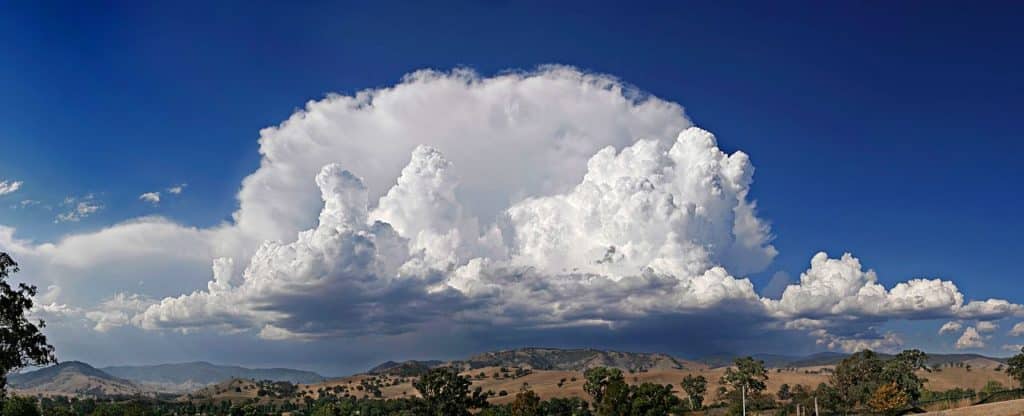
Stratocumulus clouds: These dark and lumpy clouds show up just in front of, or immediately behind a frontal system. They may provide a brief period of rain or drizzle that most likely will end during the afternoon or early evening.
Here at The National Center for Outdoor & Adventure Education, our backcountry guides and educators travel the globe on an annual basis, which means we have experienced every form of weather imaginable throughout the year. It is crucial that our instructors understand the indicators that inform of oncoming weather. Knowing how to “read the sky” is a must for all outdoor educators, and it is a skill we love to pass on to our course participants.
Look Up! And Meet Your Feathered Friends (Part 2 of 3)
Outdoor Educator TrainingOne of the best parts of an outdoor educator instructor course is when the group of participants comes together — either spontaneously throughout the day, or at the end of a solid day of training — and we all benefit from the unorganized sharing of one’s individual talents and skills.
These experiential-based skill-sharing sessions — which can range from eco-sensitive and safe ways of starting a fire, to hacks for successfully facilitating dialogue among youth participating in a 12-mile trek — bring a helpful spirit to the group. In addition, they enable everyone participating in the course to see the wilderness experience in a different light, with a new set of eyes and appreciation.
Here at The National Center for Outdoor & Adventure Education (NCOAE), we expect our staff to go into the backcountry with a rock-solid set of technical outdoor skills. But it’s also our objective to hire instructors who have developed skills and knowledge that sets them apart from others and deepens the backcountry experience for those they educate and guide.
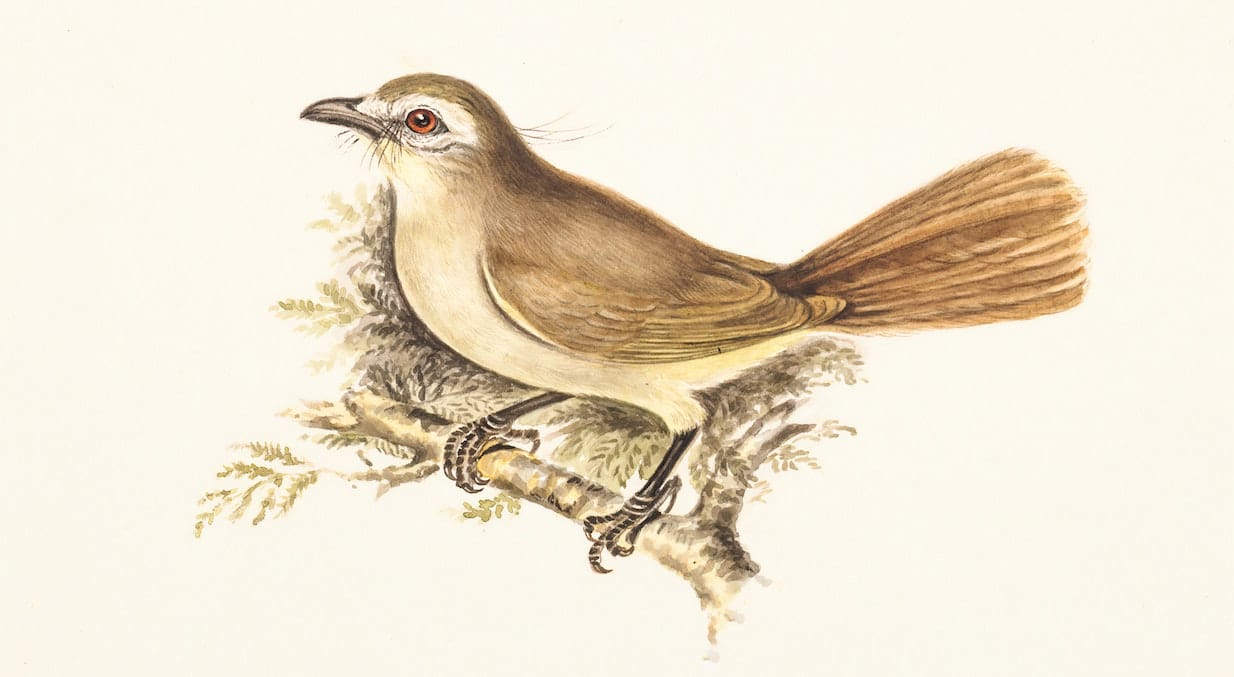
We talked about instructors who become fluent in the constellations and stars in the first post in this three-part series. Bird identification is another of those teachable skills and is the second of our series’ topics.
Just a walk through a forest as someone points up and tells you the name of the bird perched on a low-hanging branch can be a surprising and eye-opening experience. Learning the identities of the birds in your area can help you connect with the local environment, offering you a teaching skill that can bring a new community of people to enjoy the outdoors and participate in what is essentially a free hobby — birding (aka birdwatching).
Here’s pretty much all you need to get started:
(more…)Look Up! Part 1 — A Guide to Viewing the Upper Half of Our Surroundings
Outdoor Educator TrainingWe’re literally going to be looking upward in the next three posts here on the NCOAE blog, with tips for outdoor educators, wilderness guides, and outdoor recreation enthusiasts alike regarding the terrain overhead. We will be honing our outdoors skills by exploring the wilderness above our heads.
Today’s post (part one in the three-part series) suggests taking a close look at the night sky. And why would we want to do that? Because most of us in the outdoor and experiential education field are adept at tying knots; cooking over a campfire; and naming local rivers, rapids and mountain ranges. But when it comes to the landscape above our heads — the heavens, the clouds, and the winged wildlife — many of us remain slack jawed with wonder.
Imagine an evening in the backcountry with a group of students or adults, some of them seeing bright stars — unhampered by city lights — perhaps for the first time. At this point, you can point upward and say, “That isn’t just a beautiful sky. It’s way more than just that!”
By having everyone lay down, look up, and listen as you point out and describe the individual stars and constellations that your group can now clearly see because they are far from city lights, you’ve opened everyone’s field of vision to the space above our buildings and tree lines that’s often forgotten and/or taken for granted.
With just a little bit of research, you can pick up a wealth of “fun facts” about the night sky. For example, knowing where to find constellations and then sharing the stories that accompany these heavenly connect-the-dot starry clusters makes you even more authoritative and helpful than you already are.
And the stories behind the constellations are beautiful, cultural, and entertaining. Using the embedded video below, watch and listen to Neal deGrasse Tyson, astrophysicist, cosmologist, planetary scientist, author, and science communicator, as he describes the night sky.
The best place to start any chat about the constellations is with the Big Dipper, which is part of Ursa Major (Great Bear). It is comprised of seven stars, with three representing the handle overhead, connected to the remaining four stars to create a big square pot or pan.
(more…)Tips for Participating in EMT Training Online
EMT TrainingYou might have heard that we have packed up and moved the first 14 days of our traditional June, July and August “Intensive” 19-Day EMT-B training courses to an online and at-home format. The reason for this change, of course, is the continuing saga of the coronavirus.
What this modification essentially does is add a mandatory hybrid component to this 19-day training program, with 14 days online, followed by five days on campus for practical and hands-on skills training. Earlier this year, the North Carolina Office of EMS approved our adjusted schedule for five days of on-campus EMT training programs.

Meanwhile, all NCOAE medical training programs taking place outside North Carolina have been put on hold, and the summer sessions on campus in Wilmington, N.C., remain on schedule, but with the hybrid component playing a major part of that training.
Which raises several important questions, including:
- How do we successfully train future emergency medical technicians remotely in this emergency era of digital space?
- How does a potential NCOAE trainee become a great online learner?
Just like everything else connected to COVID-19, this is brand new territory for all of us, and trial-and-error has become the name of the game. That said, we here at NCOAE have come up with some rules and procedures for those in training that, to date, have proven successful. And we will briefly outline those procedures toward the end of this post.
But for now, we’d like to share what we’ve discovered in our effort to make the temporary transition to digital training effective, interesting, and productive. What advice can we offer to those students new to online learning who are participating in our Hybrid 19-Day ‘Intensive’ EMT (EMT-B) training program? Here’s what we learned:
(more…)Using Collective Impact to Forge a Path Forward with Coronavirus
NCOAE RecommendsBecause of the situation with COVID-19, we’ve been thinking a lot lately about the path forward for outdoor and adventure-based programs like the ones we offer here at The National Center for Outdoor & Adventure Education (NCOAE). Specifically, how do we operate in a day and age where physical distancing is either required or strongly recommended? That’s where Collective Impact may come into play.
The concept of Collective Impact takes into consideration the notion that industry players need to coordinate their efforts and work together in order to create lasting solutions to shared and common societal challenges and problems.
Put simply, collective impact is a structured form of collaboration. The term garnered national recognition in 2011 when it was touted by the White House Council for Community Solutions as a powerful framework for solving social issues. The concept became so popular that “collective impact” was selected as among the top philanthropic “buzzwords” for that year.
With the current conundrum of coronavirus facing our world today, we here at NCOAE are of the opinion that solutions for COVID-19-related issues from any qualified source is worth considering. And, if you or your organization is of the same mind, we would love to hear from you. We can listen to each other’s challenges and maybe we can help each other discover solutions to those problems associated with operating an outdoor and/or adventure-based program in the time of coronavirus.
Since this crisis evolved in mid-February, we have been working up schedules and then reworking them. And, because our work crosses into many sectors — including schools, businesses, and government agencies — and because we deal with multiple states and international borders, we find ourselves dealing with a lot of moving parts.
The good news, of course, is that our staff has evolved to become a finely tuned machine. We’re able to juggle a lot and do it well. But that still leaves us wondering how the greater outdoor and adventure education industry may be grappling with the same or similar challenges as we’re contending with.
As most successful adventurers and explorers do, we set out to do some research. And here is some of what we’ve discovered so far: (more…)
Finding Adventure in Education That’s Taught Online
Experiential EducationSo, here we all sit, settling into another sequential week of sequestered sheltering and supreme seclusion, many of us working from home and many of us not. As a certified teacher with a license in EC, ESL, AIG and Classroom Education, and as a member of The National Center for Outdoor & Adventure Education’s (NCOAE) leadership team, I admit I was caught off balance by the virus named “SARS-CoV-2” and the disease it causes, named coronavirus disease 2019 (COVID-19).
Like getting smacked upside the head by a wayward surfboard.
This stay-at-home edict forced me to search, find, and deliver a completely new approach to educating my students. And I had zero time to waste. There were students to contact. More important — I had to learn ways to communicate with them face to face and get them engaged through online platforms. And I felt the pressure to do all of this ASAP!
I quickly discovered that my side was already behind — and hindered by handicaps. The major hurdle? I have never owned a cell phone. Essentially, I’m a caveperson. Then I remembered what it is we outdoor and adventure educators constantly preach to our students: Step out of your comfort zone and adapt in the time of coronavirus.
It was time for me to do just that. Over the first few weeks operating under shelter in place orders, I learned how to use Zoom for video conferencing and Google classroom for creating, distributing, and grading assignments in a paperless way. I also quickly adapted and learned how to use additional online platforms to connect with students, co-workers, and community members. And through this process, I learned that our new and hopefully temporary wilderness is the Internet, where we continue the exploration of creativity and the delivery of instruction.
(more…)Adapting Outdoor Education in the Time of Coronavirus
About NCOAEHere at The National Center for Outdoor & Adventure Education (NCOAE), we’re known nationally and around the world for our consistency in producing highly impactful backcountry climbing, backpacking, kayaking and other outdoor adventures of an educational and team-focused nature. Our highly trained and experienced outdoor educators, field guides — along with our wilderness medicine and EMT instructors — present hands on training and guidance that vastly improve our students’ technical outdoor and wilderness medical skills.
That’s because all of our instructors and guides are experts at adapting to every scenario — whether that’s in a wilderness or urban setting, presenting each of our students and participants with endless opportunities to not only succeed, but to excel at whatever obstacle confronts them on the trail or in the medical training field guides.
To that end, our business currently finds itself in the same situation faced by every other educational organization on the planet: managing our affairs at a time when the virus named “SARS-CoV-2” and the disease it causes, coronavirus disease 2019 (COVID-19), is impacting every single aspect of the world economy. How we’re handling the problem is much like what we do on the trail. We’ve chosen to look at this uncertainty and chaos as an opportunity by seeking out the best solutions and maneuvering around and past what is undoubtedly nothing short of a global health catastrophe. In particular, we want you to know how we’re meeting the challenges with regard to our educational training and programming.
For example: (more…)
NCOAE Embraces Place-Based Learning
NCOAE CurriculumEmbedded in each of our outdoor and wilderness-based experiential education courses is the delivery of place-based learning, which was first introduced by David Sobel in his groundbreaking book, Place-Based Education: Connecting Classrooms and Communities.
Place-based learning connects students to history, landscape, geography, and people through the intense exploration of a specific area which, along the way, serves to help solve the area’s inherent or most recent and/or chronic challenges.
Here at The National Center for Outdoor & Adventure Education (NCOAE), our field instructors are required to research and be knowledgeable about the history, ecology, people, and events that impact a course’s geographical areas. Instructors then share that information with each other, discussing how to tie data to parts of the NCOAE curriculum and/or a client’s Custom Program requirements.
Having this depth of knowledge binds content and curriculum. The result? No topic or subject is taught in isolation. For example, the study of flora and fauna connects to math, literacy, and science. And meeting and knowing people who helped shape the land through writings or active conservation of the area ties into global studies, communication, and environmental stewardship. In this way, place-based learning benefits educators, students, and communities. For instance: (more…)
TALK TO US
Have any further questions about our courses, what you’ll learn, or what else to expect? Contact us, we’re here to help!
